Peter Jordan is a German cancer researcher who after his PhD graduation at DKFZ in Heidelberg moved to Lisbon, Portugal, and stayed there. He eventually became professor at the University of Lisbon and even an institute director. Probably because he does such great science.
In July 2017, a Portuguese research institute proudly announced (translated):
“Peter Jordan, researcher at the Department of Human Genetics, was elected president of the Scientific Council (CC) of the Instituto Nacional de Saúde Doutor Ricardo Jorge for the triennium 2017-2020 […]
With a degree in Biology from the University of Bonn and a PhD in Biology from the German Cancer Research Center and the University of Heidelberg, Peter Jordan joined the Ricardo Jorge Institute as a researcher in 1993. He has been developing his work in the field of cancer molecular genetics focusing on processing growth stimuli of colorectal cancer cells.
With a post-doctorate at the Faculty of Medicine of the University of Lisbon, Peter Jordan obtained, in 2009, approval in the public qualification tests for the exercise of scientific coordination functions at the Ricardo Jorge Institute. In the Department of Human Genetics, he is responsible for the research group on molecular and cellular biology of cancer and signal transduction pathways and associated pathologies.”
According to his CV, Prof Jordan was re-elected as President of the Scientific Council of Instituto Nacional de Saúde Doutor Ricardo Jorge (INSA) till 2023.
Zombie scientist Sonia Melo awarded by AstraZeneca
Sonia Melo is back, and not to be messed with. The Portuguese zombie scientist is responsible for a number of papers with manipulated data (only one was retracted, Melo et al, Nature Genetics, 2009), saw her EMBO Young Investigator funding withdrawn in 2016, but was whitewashed and reinstalled by her employing institute Instituto de Investigação e…
Richard Hill, the man even gels are afraid of
Get ready to meet Dr Richard Hill and his amazing jumping blots. Just don’t stare, or you’ll get hurt.
We all know about research fraud in Portugal (remember Sonia Melo? Or Richard Hill?), thus it is great to see that decent, honest and integer scholars from Germany like Prof Jordan are upholding the high ethics standards where others failed.
Well, almost. The scientific director now has a dozen of papers on PubPeer.
Clare Francis stumbled over Jordan’s research while uncovering someone else’s fraud, namely that of Eric WF Lam, who was eventually sacked by Imperial College in London for data forgery (which seems to be a privilege of white men only at Imperial, those certainly aren’t sacked those no matter how bad their fraud).
Eric Lam: shady research at Imperial to cure breast cancer
Eric Lam is yet another of the many “Curing Cancer with Photoshop” researchers which PubPeer is full of. This professor of molecular Oncology at Imperial College in London is responsible for several papers with duplicated gel bands, but does it matter? He has 250 more.
So here is that Lam-coauthored paper from Jordan’s lab:
Patrícia Barros , Eric W.-F. Lam, Peter Jordan, Paulo Matos Rac1 signalling modulates a STAT5/BCL-6 transcriptional switch on cell-cycle-associated target gene promoters Nucleic Acids Research (2012) doi: 10.1093/nar/gks571
Flagged by Clare Francis in 2018 and continued by Cheshire in 2020:


The last author Paolo Mathos worked as PhD student and postdoc under Jordan and soon returned as tenured “assistant investigator” at the INSA which Jordan is scientific director of. The two men are now busy curing cancer and cystic fibrosis.
It seems however poor Eric Lam had nothing to do with those forgeries above… Look how efficient the Jordan lab in Lisbon was, probably thanks to Matos:
Ana Isabel Mendes , Paulo Matos , Sónia Moniz , Simão Luz , Margarida D. Amaral , Carlos M. Farinha , Peter Jordan Antagonistic regulation of cystic fibrosis transmembrane conductance regulator cell surface expression by protein kinases WNK4 and spleen tyrosine kinase Molecular and Cellular Biology (2011) doi: 10.1128/mcb.05152-11
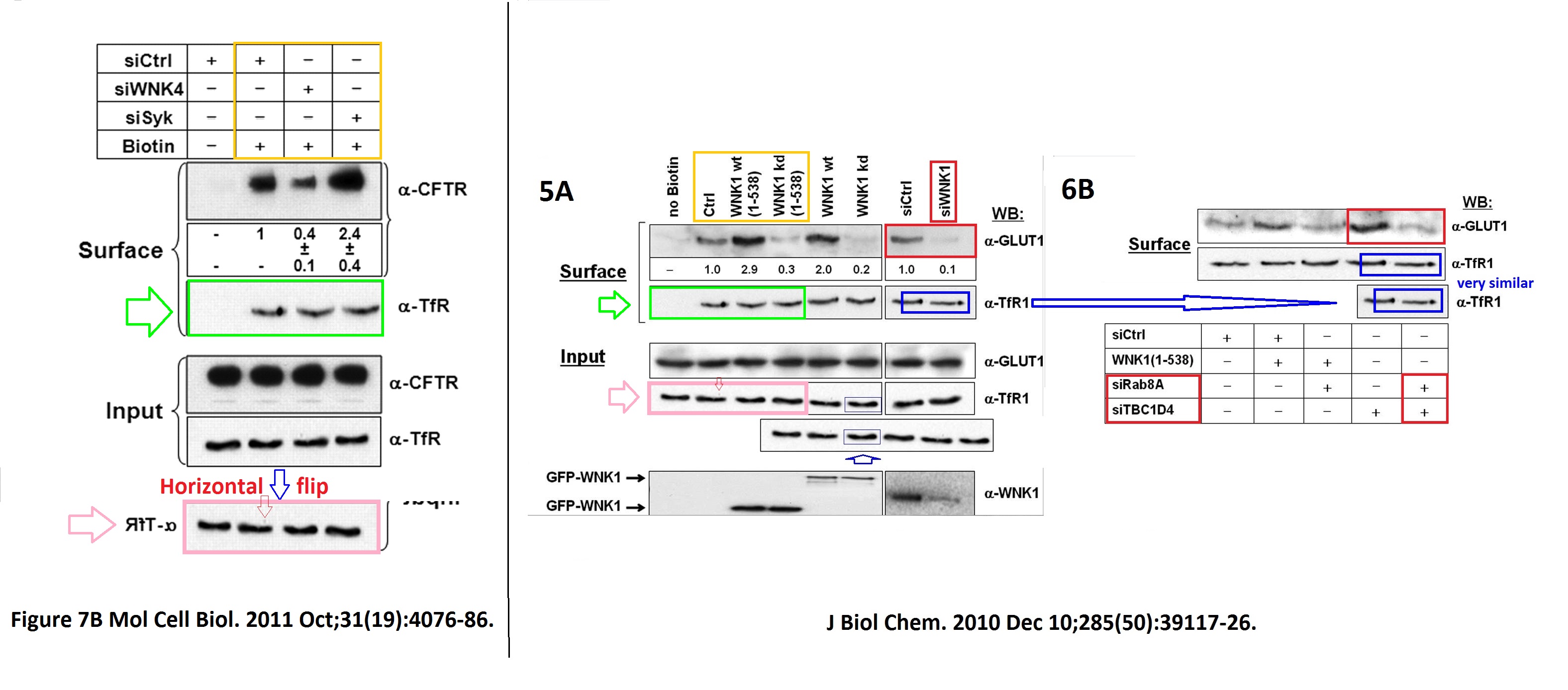
The fake gels were previously used in this paper which had problems of its own:
Ana Isabel Mendes , Paulo Matos , Sónia Moniz , Peter Jordan Protein kinase WNK1 promotes cell surface expression of glucose transporter GLUT1 by regulating a Tre-2/USP6-BUB2-Cdc16 domain family member 4 (TBC1D4)-Rab8A complex Journal of Biological Chemistry (2010) doi: 10.1074/jbc.m110.159418
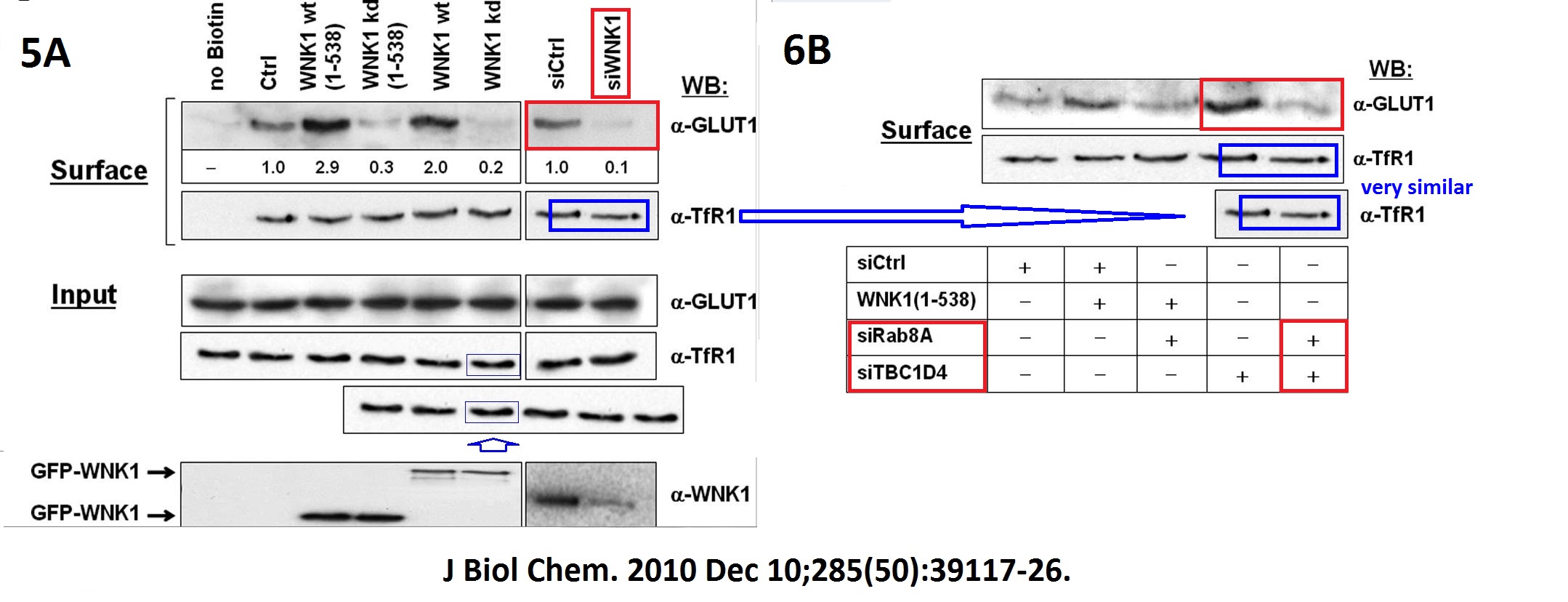
But then again, the journal JBC is under new leadership and published by Elsevier now. They declare such papers as “too old”.
How JBC sold its Soul to the Devil
All good things come to an end.
I wonder what was wrong with this experiment to prompt someone to urgently remove undesired signal on this protein gel with copy-pasted bits of background:

Paulo Matos , Larissa Kotelevets , Vania Goncalves , Andreai F A Henriques , Andreia Henriques , Philippe Zerbib , Mary Pat Moyer , Eric Chastre , Peter Jordan Ibuprofen inhibits colitis-induced overexpression of tumor-related Rac1b Neoplasia (2013) doi: 10.1593/neo.121890
Another falsified gel, this time flagged by Cheshire:
Vânia Gonçalves , Andreia F A Henriques , Andreia Henriques , Joana F S Pereira , Joana Pereira , Ana Neves Costa , Mary Pat Moyer , Luís Ferreira Moita , Margarida Gama-Carvalho , Paulo Matos , Peter Jordan Phosphorylation of SRSF1 by SRPK1 regulates alternative splicing of tumor-related Rac1b in colorectal cells RNA (2014) doi: 10.1261/rna.041376.113


There was more:
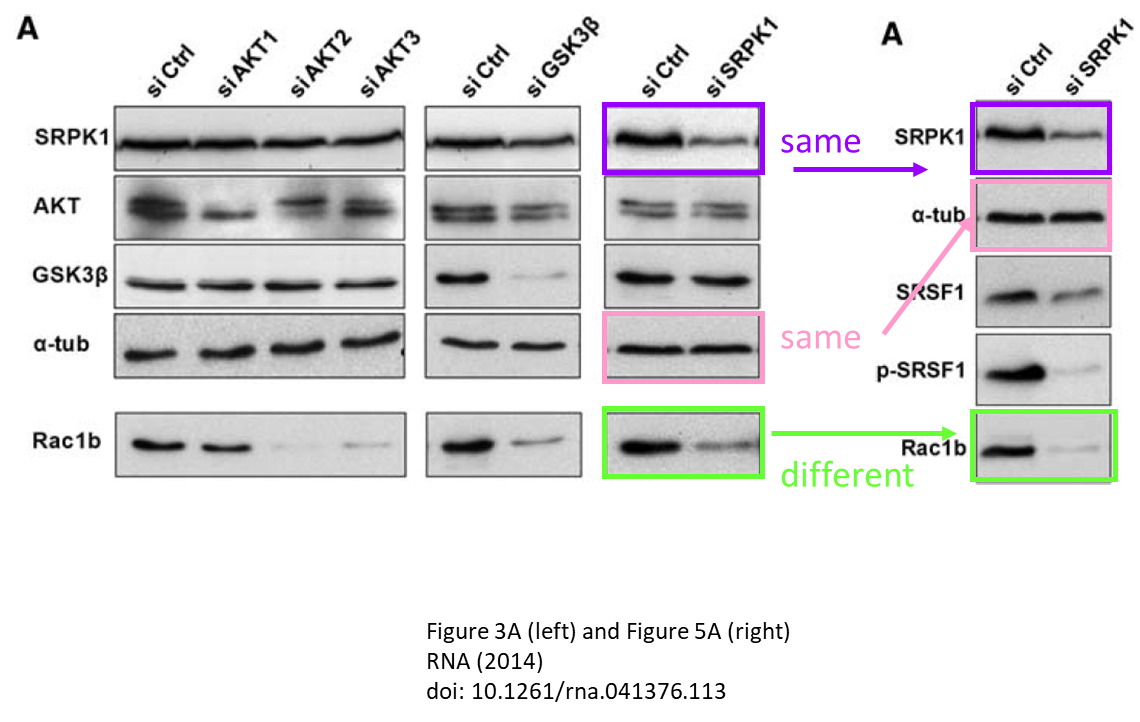
Too old, you say? Papers did their job long ago, grants a successfully acquired, promotions and positions successfully obtained? Let’s not cry over the spilt milk from almost a decade ago?
How about this one, this is new, and like all others, it features Dr Matos:
Cláudia Almeida Loureiro , Francisco R. Pinto , Patrícia Barros , Paulo Matos , Peter Jordan A SYK/SHC1 pathway regulates the amount of CFTR in the plasma membrane Cellular and molecular life sciences : CMLS (2020) doi: 10.1007/s00018-020-03448-4
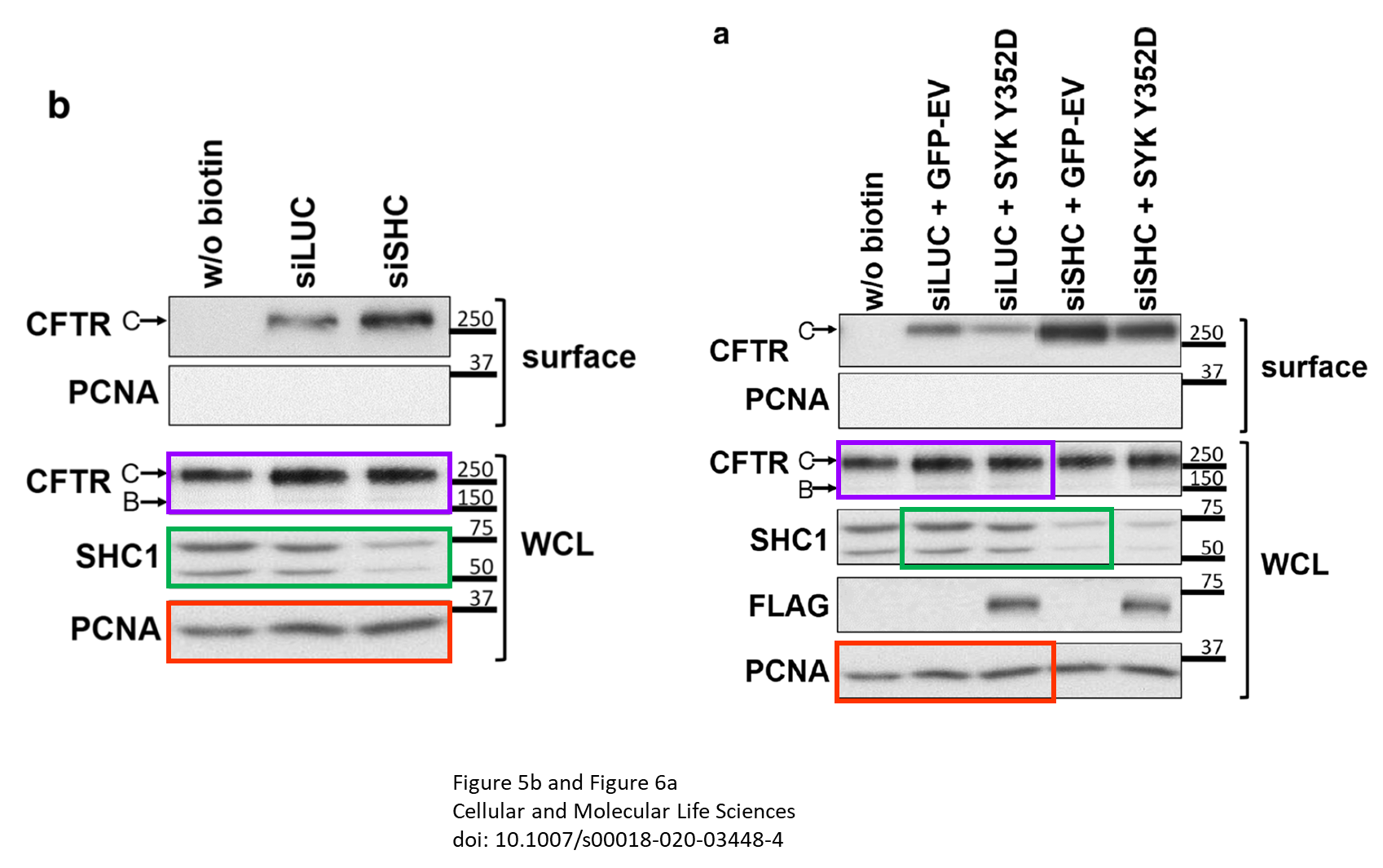
Cheshire spotted also other problems:


But we should not worry, because all these Photoshop forgeries never affected any conclusions. Look, this was corrected:
Cláudia Almeida Loureiro , Patrícia Barros , Paulo Matos , Peter Jordan Tyrosine phosphorylation modulates cell surface expression of chloride cotransporters NKCC2 and KCC3 Archives of Biochemistry and Biophysics (2019) doi: 10.1016/j.abb.2019.05.022
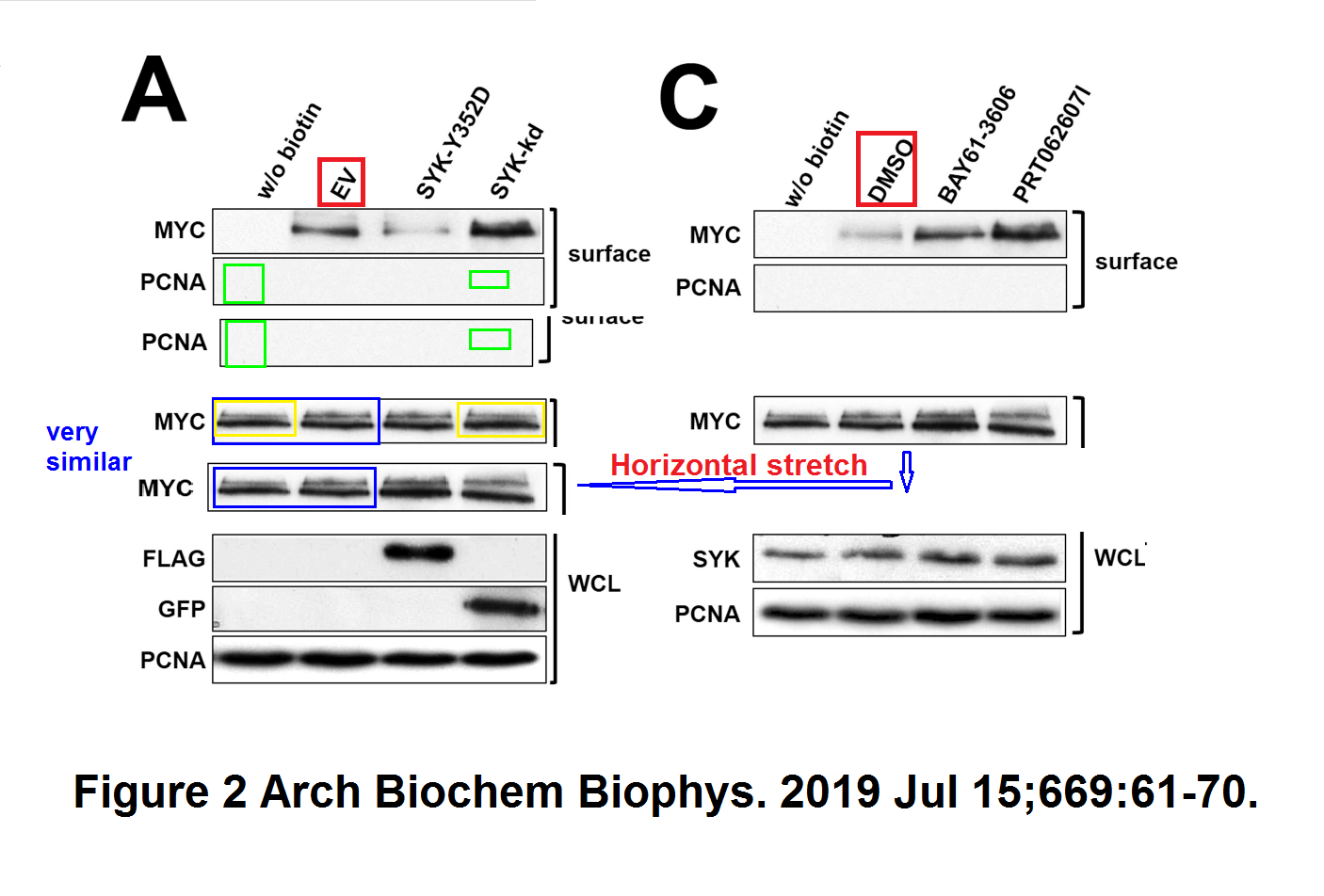
The Corrigendum from June 2021 stated:
“The authors regret the poor image quality detected after publication in 2 Western blot panels from Figure 2 and have replaced the corresponding images. The authors would like to apologize for any inconvenience caused.”
Poor image quality. The two-year-old raw data was apparently unavailable, so Jordan and Matos replaced the offending blots with new ones.
Expect this Elsevier journal to issue another corrigendum for “poor quality” data also:
Andreia F.A. Henriques , Paulo Matos , Ana Sofia Carvalho , Mikel Azkargorta , Felix Elortza , Rune Matthiesen , Peter Jordan WNK1 phosphorylation sites in TBC1D1 and TBC1D4 modulate cell surface expression of GLUT1 Archives of Biochemistry and Biophysics (2020) doi: 10.1016/j.abb.2019.108223

I wrote to Jordan asking for his comment, twice. He didn’t reply. But he does comment on PubPeer occasionally:
Célia Ventura , Joana F. S. Pereira , Paulo Matos , Bárbara Marques , Peter Jordan , António Sousa-Uva , Maria João Silva Cytotoxicity and genotoxicity of MWCNT-7 and crocidolite: assessment in alveolar epithelial cells versus their coculture with monocyte-derived macrophages Nanotoxicology (2020) doi: 10.1080/17435390.2019.1695975

In this regard, Jordan commented on PubPeer:
“In this work, I had no role in the experimental work or documentation of the results.”
Honorary authorship then, humble gifts to the mentor and director? The last author Maria Joao Silva did her PhD in Jordan’s Department of Human Genetics and now runs a lab in the institute he is director of. Cheshire reminded Jordan what he signed up to when submitting the manuscript:
“According to the editorial policies of this publisher, “Authors listed on an article must meet all of the following criteria: … 5. Agree to take responsibility and be accountable for the contents of the article and to share responsibility to resolve any questions raised about the accuracy or integrity of the published work.“”
There, Jordan remained silent.

Same situation here:
Ana Laura Vieira Alves , Angela Margarida Costa , Olga Martinho , Vinicius Duval Da Silva , Peter Jordan, Viviane Aline Oliveira Silva , Rui Manuel Reis WNK2 Inhibits Autophagic Flux in Human Glioblastoma Cell Line Cells (2020) doi: 10.3390/cells9020485
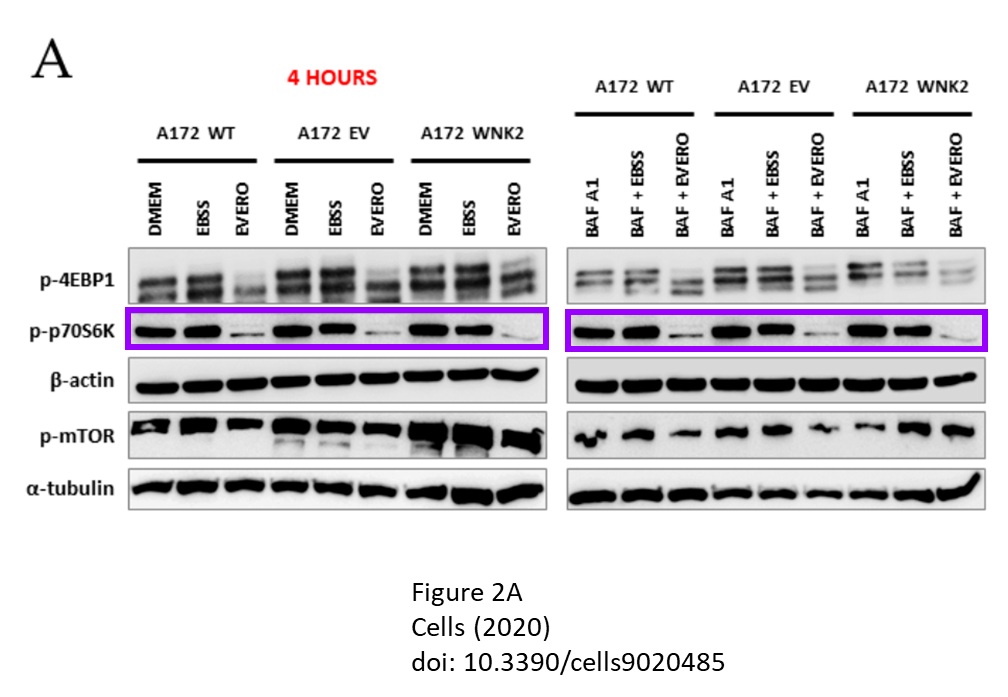
But his co-author Rui Manuel Reis, who used to work in Portugal before he became institute director in Brazil, explained:
“Dear Sir, thank you for pointing out the mistake in the picture. In the process of figure editing, we add a repetition, instead of the right lane of the BAF condition. As you can notice in the quantification of the bands below in Figure A, we used the right figure, for that leading to different values. Anyhow, this mistake does not impact the results or the conclusions of the study.“
In another case, Jordan even posted raw data on PubPeer, although only two years after the original concerns were raised:
Vânia Gonçalves, Andreia F.A Henriques , Paulo Matos , Peter Jordan Ibuprofen disrupts a WNK1/GSK3β/SRPK1 protein complex required for expression of tumor-related splicing variant RAC1B in colorectal cells Oncotarget (2020) doi: 10.18632/oncotarget.27816


Jordan reacted on PubPeer soon after I wrote to him:
“The original uncropped images were sent in 2020 to the manuscript’s editor, who saw no reason to take any further action.“
He also shared this “raw data” which suggests the splicing allegations are all wrong and slanderous. But they are not, the published gel figures are clearly spliced. Rather, the “raw data” gel scans Jordan posted are of abysmally low resolution, blurry and boxed, as if someone was trying to bullshit his critics. The low image quality might be understandable if the scans were 20 years old, but we are talking about a paper from 2020. With Matos as co-author.

As for the editors not minding: we are talking about Mikhail Blagosklonny’s journal Oncotarget here. A bad joke of fake cancer research.
Blagosklonny’s lawyer threatens me to love Oncotarget or else
Oncotarget, the somewhat controversial OA journal, switched from pretend-soliciting my services to threatening to sue me for defamation. Their lawyer writes my disrespect caused them financial damage.
You can say what you want about the INSA scientific director Jordan, but he cares about research integrity big time. His institute has a standing Ethics Commission! It is not really an investigative body for research misconduct, all they can do is
“Issue opinions on ethical issues in the field of INSA activities”
I wrote to the commission, but did not receive a reply.
Knowing how such things are done on the Iberian peninsula, I suspect they are now busy issuing an opinion about unjustified slanderous allegations, unaffected conclusions, reproducible results, racist persecution of Portuguese researchers, and the urgent need to crack down on anti-science terrorism on PubPeer and on For Better Science.
Update 4 July 2022
Some hours after this article appeared, Professor Jordan found time to reply to my earlier emails. The INSA scientific director announced to investigate himself, and that there will never be any retractions:
“Dear Mr Schneider,
I have been alerted that some images in our previous publications apparently contain duplicated items. We are currently assembling the corresponding raw data to understand the origin of these situations. In case we find any problem worth reporting, we will contact the respective journals editors and ask for the publication of an Errata.
Sincerely
Peter Jordan”
I thank all my donors for supporting my journalism. You can be one of them!
Make a one-time donation:
I thank all my donors for supporting my journalism. You can be one of them!
Make a monthly donation:
Choose an amount
Or enter a custom amount
Your contribution is appreciated.
Your contribution is appreciated.
DonateDonate monthly






Happy Insurrection Day! (no, I’m not celebrating the Covidiots running around with guns and face paint… I’m celebrating those dead patriotic founders for running around with guns and face paint a long time ago. Totally different.) For all the hate that America gets, I think it moved the needle in the right direction. So yay US.
Regarding this article, Leonid gives me too much credit… I only looked at some of these crap papers after Claire Francis pointed out the older crap that this crap author group published. Since I’m not a scientist or researcher or anyone even close to those things, I have to wonder about all of the crap “professionals” that looked the other way while all this crap gets published. I’ll say again – science isn’t broken; it’s a joke. Crap.
LikeLike
I think Prof Hochendinger is the perfect fit for Harvard.
LikeLike
I think Weil-Cornell would be better suited for this degree of, er, talent
LikeLike
Someone needs to continue Pandolfi’s legacy in Harvard though.
LikeLike
Do Jnk1 and Jnk2 stand for Junk 1 and Junk 2?
Perhaps it was a plea for help?
LikeLike
What would Fernando Pessoa make of this?
LikeLike
Fernando Pessoa would be very unhappy for sure as I am very unhappy as a Portuguese scientist living overseas. He would think at the end all the effort of the ancient Portuguese was in vain: ” o Mar salgado, quanto do teu sal sao lagrimas de Portugal?”
The main problem is that most of the science in Portugal is a crap with a few exceptions including the whole champalimaud foundation a money sucker
LikeLike
Arch Biochem Biophys. 2020 Jan 15;679:108223. doi: 10.1016/j.abb.2019.108223. Epub 2019 Dec 6.
WNK1 phosphorylation sites in TBC1D1 and TBC1D4 modulate cell surface expression of GLUT1
Andreia F A Henriques 1, Paulo Matos 1, Ana Sofia Carvalho 2, Mikel Azkargorta 3, Felix Elortza 3, Rune Matthiesen 2, Peter Jordan 4
Affiliations
1Department of Human Genetics, National Health Institute ‘Dr. Ricardo Jorge’, Lisbon, Portugal; BioISI – Biosystems & Integrative Sciences Institute, Faculty of Sciences, University of Lisbon, Lisbon, Portugal.
2CEDOC-Chronic Diseases Research Centre, Nova Medical School, Faculdade de Ciências Médicas, Universidade Nova de Lisboa, Lisbon, Portugal.
3Center for Cooperative Research in Biosciences (CIC bioGUNE), Building 800, Science and Technology Park of Bizkaia, 48160, Derio, Spain.
4Department of Human Genetics, National Health Institute ‘Dr. Ricardo Jorge’, Lisbon, Portugal; BioISI – Biosystems & Integrative Sciences Institute, Faculty of Sciences, University of Lisbon, Lisbon, Portugal. Electronic address: peter.jordan@insa.min-saude.pt.
PMID: 31816312 DOI: 10.1016/j.abb.2019.108223
https://pubpeer.com/publications/A6374D1E37CC516D7C5409096EF0BD#3
#2 Moraea ardesiaca
“The drawn squares indicate how the Myc-tagged TBC1D1 or TBC1D4 bands (9E10) should have been cropped. Both areas were very similar, so it went unnoticed. Because the PCNA bands were distorted in this upper PCNA blot, lysates from another replicate were used. The bands should have been cropped again, as indicated by the drawn squares.”
Does that count as a correction, and by whom?
LikeLike